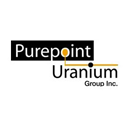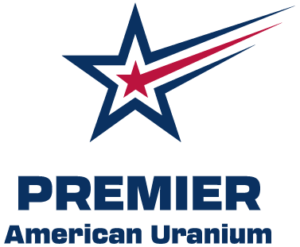A Comprehensive Guide to Smart Uranium Exploration Investments in 2024

Uranium exploration in Athabasca Basin: High risk, high reward. Look for companies with large land holdings, experienced teams, and disciplined capital management. Due diligence crucial.
The uranium exploration sector, particularly in Canada's Athabasca Basin, presents a unique and potentially lucrative investment opportunity. However, it requires careful consideration and a deep understanding of the complex challenges involved. This comprehensive guide will help investors navigate the intricacies of investing in uranium exploration companies based on insights from industry experts and historical data. We'll explore the potential rewards, the significant challenges, and the key factors to consider when evaluating investment opportunities in this high-stakes sector.
The Athabasca Basin: A Uranium Powerhouse
Saskatchewan's Athabasca Basin has become a global hotspot for uranium exploration and production. This region alone provides 20% of the world's uranium supply, making it a critical area for investors interested in the nuclear fuel cycle. The Basin's importance is underscored by its impressive discovery rate: over the past six decades, a new uranium deposit has been uncovered approximately every 18 months.
What makes these discoveries particularly attractive to investors is their potential value. Recent findings in the Athabasca Basin have averaged an in-situ value of $10 billion each. This staggering figure highlights the immense potential returns for companies and investors who successfully locate new deposits. However, it's crucial to understand that these high-value discoveries come with equally high challenges and risks.
The Exploration Challenge: Finding a Needle in a Haystack
To truly appreciate the difficulty of uranium exploration in the Athabasca Basin, consider this analogy: finding a uranium deposit is like locating a specific leaf in a vast forest. The basin covers an enormous area of 100,000 square kilometers – roughly the size of New York State. In contrast, typical uranium deposits in this region are only about 40-50,000 cubic meters in size.
To put this into perspective, if the Athabasca Basin were New York State, a typical uranium deposit would be about the size of the Statue of Liberty, Windsor Castle, or Toronto's Roy Thompson Hall. This extreme disparity between the search area and the target size underscores the need for precise, efficient, and technologically advanced exploration techniques.
Moreover, these deposits are buried deep underground, often under layers of sandstone and other geological formations. Unlike surface minerals, uranium deposits in the Athabasca Basin cannot be found through simple visual inspection or surface sampling alone. This invisibility adds another layer of complexity to the exploration process.
Evaluation Criteria for Exploration Companies
Given the challenges of uranium exploration, investors need to evaluate the companies they're considering carefully. Here are the key criteria to assess:
- Land Holdings: Look for companies with large portfolios and multiple projects within the Basin. A diverse and extensive land package indicates a company has more opportunities for discovery and suggests the company has the financial capacity and geological expertise to acquire and maintain significant exploration rights. Be wary of companies with small or limited numbers of projects, as this lack of diversification increases risk.
- Investment to Date: Substantial investment in exploration, both in terms of stages completed and dollar values, is often seen before a discovery. This demonstrates the company's commitment and financial capacity to see projects through to completion. Companies that have invested heavily in early-stage exploration, including geophysical surveys and initial drilling programs, may be closer to a potential discovery. However, be cautious of companies that have spent excessively without showing progress or results.
- Experience: Seek teams with deep expertise specifically in uranium exploration and a strong track record in the Athabasca Basin. The unique geological characteristics of the Basin require specialized knowledge. Look for companies led by geologists and executives with a history of successful regional discoveries or development projects. Be skeptical of teams with limited or no experience in uranium exploration or in the specific challenges of the Athabasca Basin.
- Capital Management: It is crucial to efficiently allocate funds directly into exploratory activities and detailed definition work before extensive drilling. Look for companies that maintain a healthy balance between exploration expenses and administrative costs. Be cautious of those with high overhead or executive compensation relative to their exploration spending. Effective capital management also involves strategic planning of exploration campaigns to maximize the value of each dollar spent.
- Persistence: Companies should demonstrate a commitment to advancing projects carefully, continuously learning and reprioritizing targets based on new data. Uranium exploration is a long-term endeavor, often taking years to make a significant discovery. Look for companies that show consistent progress in their exploration programs, even if they haven't made a major discovery yet. Be wary of those that frequently jump between projects without thorough investigation, as this may indicate a lack of strategic focus.
The Exploration Process: A Step-by-Step Approach
Understanding the exploration process can help investors gauge a company's progress and potential. Uranium exploration companies typically employ a range of techniques to narrow down potential drilling sites:
- Historical Data Compilation: The first step involves analyzing existing geological information. This includes reviewing government surveys, academic research, and data from previous exploration efforts in the area. This stage is relatively inexpensive but can provide valuable insights to guide further exploration.
- Surface Sampling: This involves collecting and analyzing soil, rock, sediment, vegetation, and gas samples from the surface. These samples can provide clues about the underlying geology and potential uranium mineralization. While more costly than data compilation, surface sampling is still a relatively inexpensive way to identify areas of interest.
- Airborne Geophysics: Companies conduct broad surveys using aircraft equipped with specialized sensors. These surveys can detect variations in magnetic fields, electromagnetic conductivity, and gravity, indicating geological structures favorable for uranium deposits. Airborne surveys allow for rapid coverage of large areas but provide less detail than ground-based methods.
- Ground Geophysics: Companies conduct more detailed, ground-based geophysical surveys for areas of particular interest identified through earlier stages. These provide higher-resolution data about subsurface structures and potential mineralization. Ground geophysics is more expensive and time-consuming than airborne surveys but offers more precise information for drill targeting.
- Drilling: The ultimate test of geological predictions is drilling. Initial exploratory drilling, often called "first pass" drilling, aims to confirm the presence of favorable geological conditions and potential uranium mineralization. If promising results are found, follow-up drilling is conducted to delineate the extent and grade of the mineralization. Drilling is by far the most expensive part of the exploration process, with each hole potentially costing hundreds of thousands of dollars.
Each step in this process increases in precision and cost. Companies must balance the need for thorough exploration with the constraints of their budgets. Investors should look for companies that show a logical progression through these stages, with each step informing and refining the next.
The Cost of Discovery: High Stakes, High Rewards
The path to a significant uranium discovery is often long and expensive. On average, exploration companies invest over $65 million and drill more than 25 holes before making a major discovery. This substantial investment reflects the challenging nature of uranium exploration in the Athabasca Basin.
However, the potential payoff for a successful discovery can be immense. Historically, companies have seen their market value increase by an average of over 1,000% within six months of announcing a major discovery. This dramatic increase reflects both the scarcity of significant uranium deposits and their potential value. For example, NexGen Energy's market value grew from about $38.8 million before the discovery of its Arrow deposit to over $5 billion. Similarly, IsoEnergy saw its value rise from $35 million to $717 million following the discovery of its Hurricane zone.
These examples illustrate the potential for exponential returns in uranium exploration investments. However, it's crucial to remember that for every successful discovery, there are many exploration programs that don't yield significant results.
Investor Considerations: Balancing Risk and Reward
Given the high-risk, high-reward nature of uranium exploration investments, here are some critical considerations for investors:
- Portfolio Diversification: Given the high-risk nature of uranium exploration, consider investing in multiple companies to spread risk. This approach increases the chances of benefiting from a major discovery while mitigating the impact of unsuccessful exploration programs.
- Long-term Perspective: Understand that significant discoveries can take years of persistent effort. Uranium exploration is not a sector for short-term traders looking for quick gains. Investors should be prepared to hold their positions for several years, through multiple exploration cycles.
- Financial Stability: Assess a company's ability to fund ongoing exploration without excessive dilution. Look for companies with strong cash positions, access to capital markets, and strategic partnerships that can provide additional funding. Be cautious of companies that frequently issue new shares to raise capital, as this can significantly dilute existing shareholders' equity.
- Transparency: Look for companies that provide clear, detailed updates on their exploration progress and findings. Regular, substantive news releases and technical reports are signs of a well-managed exploration program. Be wary of companies that provide vague or overly promotional updates without substantial technical content.
- Market Timing: When making investment decisions, consider the broader uranium market. Uranium prices can significantly impact exploration companies' valuations and their ability to raise capital. A rising uranium price environment often leads to increased investor interest and easier access to funding for exploration companies.
- Regulatory Environment: Stay informed about the regulatory landscape for uranium mining in Saskatchewan and Canada. Changes in environmental regulations, permitting processes, or government policies towards nuclear energy can impact the viability of exploration projects.
- Technical Expertise: If possible, seek advice from geologists or mining professionals who can provide insights into the technical aspects of companies' exploration programs. Understanding the geological merit of a company's projects can help make more informed investment decisions.
Investing in uranium exploration companies offers the potential for significant returns, but it requires careful analysis and a deep understanding of the industry's unique challenges. By focusing on companies with solid land holdings, experienced teams, efficient capital management, and a track record of persistent, systematic exploration, investors can position themselves to potentially benefit from the next big uranium discovery in the Athabasca Basin.
However, it's crucial to approach these investments with a clear understanding of the risks involved. The path to a significant uranium discovery is lengthy, expensive, and not guaranteed. Investors should be prepared for the possibility of losses and should only allocate funds they can afford to risk.
Ultimately, successful investing in uranium exploration requires a combination of due diligence, patience, and a bit of luck. Investors can navigate this challenging but potentially rewarding sector by thoroughly researching potential investments, maintaining a diversified portfolio, and staying informed about industry developments. The next multi-billion dollar uranium discovery may be just around the corner, and well-informed investors will be best positioned to capitalize on such opportunities.
Companies worth looking at:
Purepoint Uranium Group Inc. (TSXV: PTU) (OTCQB: PTUUF) offers a compelling investment opportunity in uranium exploration within the Athabasca Basin. Established in 2002, the company has developed significant regional expertise in this world-class uranium district. Purepoint's portfolio consists of advanced exploration properties strategically positioned for potential discoveries. This asset base is managed by a seasoned team backed by industry leaders, bringing valuable experience to navigate the complexities of uranium exploration. The company stands out for its disciplined approach to capital allocation and adherence to fundamental principles. This prudent financial management is crucial in the capital-intensive field of uranium exploration. Purepoint's long-term vision and strategic approach position it well to create shareholder value in a dynamic market environment. As a focused junior explorer in a top uranium jurisdiction, the company is well-placed to benefit from growing global interest in nuclear energy.
Skyharbour Resources (TSX-V:SYH) (OTCQB:SYHBF) (Frankfurt:SC1P) offers investors a compelling opportunity in the uranium exploration sector, with a diverse portfolio of 29 projects covering over 587,000 hectares in Canada's Athabasca Basin. The company's strategy combines advanced exploration at its flagship Moore and Russell Lake projects with a prospect generator model, effectively mitigating risk and maximizing potential returns. The Moore Uranium Project, acquired from Denison Mines, has shown promising high-grade mineralization, while the recently optioned Russell Lake Project from Rio Tinto presents significant exploration upside. These core assets position Skyharbour at the forefront of uranium exploration in a world-class district. Skyharbour's prospect generator model has attracted notable partners, including Orano Canada Inc. and Azincourt Energy. It has generated over $33 million in partner-funded exploration, significant share issuances, and potential cash payments. This approach allows Skyharbour to advance multiple projects simultaneously while preserving capital. With twenty additional 100% owned projects and a focus on geopolitically stable jurisdictions, Skyharbour offers investors exposure to uranium exploration with a balanced risk-reward profile. The company's strategy aims to maximize shareholder value through new discoveries and strategic partnerships in a critical sector.
Standard Uranium (TSX-V:STND) (OTC:STTDF) (FRA:9SU) presents an opportunity for investors in the uranium exploration sector, focusing on the highly prospective Athabasca Basin in northern Saskatchewan, Canada. The company's portfolio spans over 209,000 acres of prime land in this world-renowned uranium district, positioning it for potential significant discoveries. At the heart of Standard Uranium's strategy is the Davidson River Project, located in the promising Patterson Lake Uranium District. Despite limited drilling to date, this flagship project shows considerable potential for hosting high-grade uranium deposits. The company's commitment to further exploration at Davidson River underscores its belief in the project's untapped value. Standard Uranium employs a dual approach to maximize shareholder value. While concentrating its efforts on the Davidson River Project, the company also utilizes a project generator model for its non-core assets. This strategy allows for joint venture-funded exploration, effectively spreading risk and preserving capital. With a track record in uranium discovery and a focus on powering a clean energy future, Standard Uranium offers investors exposure to the growing uranium market. The company's targeted exploration in a geopolitically stable region, combined with its strategic approach to project advancement, positions it as an option for those seeking to invest in the future of nuclear energy.
Baselode Energy (TSXV: FIND, OTCQB: BSENF) offers investors a unique opportunity in the uranium exploration sector, with a significant land package of 272,804 hectares in the Athabasca Basin area of northern Saskatchewan, Canada. The company's 100% ownership of this land, free from option agreements or underlying royalties, provides a strong foundation for potential value creation. The company's flagship ACKIO discovery, made in September 2021, showcases Baselode's exploration prowess. This near-surface, high-grade uranium deposit extends over 375 meters along strike and 150 meters wide, with mineralization starting as shallow as 28 meters below the surface. The deposit's size and grade, coupled with its open boundaries, suggest a significant exploration upside. Baselode's innovative "Athabasca 2.0" exploration thesis sets it apart in the industry. By focusing on near-surface, basement-hosted uranium deposits outside the traditional Athabasca Basin, the company aims to discover high-grade orebodies in underexplored areas. This approach is supported by advanced geophysical methods to identify promising drill targets efficiently. For investors seeking exposure to uranium exploration with a novel approach and significant land holdings, Baselode Energy presents an intriguing opportunity in a strategic resource sector.
Myriad Uranium (CSE: M) (OTCQB: MYRUF) (FSE: C3Q) presents a compelling investment opportunity in the uranium exploration sector, with a diverse portfolio of projects across North America and Africa. The company's flagship asset is the Copper Mountain Uranium Project in Wyoming, USA, where Myriad has an earnable 75% interest. Copper Mountain boasts a rich history of uranium exploration and development, including the Arrowhead Mine which historically produced 500,000 lbs of eU3O8. The project benefits from extensive past work by Union Pacific, including approximately 2,000 boreholes and a developed mine plan. This historical investment, estimated at C$117 million in today's dollars, provides Myriad with a valuable head start in its exploration efforts. Beyond Copper Mountain, Myriad holds a 50% interest in the Millen Mountain Property in Nova Scotia, Canada, partnering with Probe Metals Inc. The company has further diversified its portfolio with an 80% interest in uranium exploration licences in Niger, tapping into the potential of Africa's uranium resources. For investors seeking exposure to uranium exploration, Myriad offers a mix of advanced projects with historical resources and greenfield exploration potential across multiple jurisdictions. The company's strategy leverages past investments while pursuing new discoveries in the evolving uranium market.
Premier American Uranium (TSXV: PUR) (OTCQB: PAUIF) offers investors a unique opportunity in the U.S. uranium sector, focusing on consolidation, exploration, and development of uranium projects across key producing regions. The company's strategic land holdings span three prominent uranium districts: the Grants Mineral Belt in New Mexico, the Great Divide Basin in Wyoming, and the Uravan Mineral Belt in Colorado. PUR's portfolio benefits from a rich history of past production and includes both current and historic uranium mineral resources. The company has initiated work programs to advance these projects, leveraging the potential of these well-established uranium-producing areas. A significant advantage for PUR is its strong backing from industry leaders and institutional investors, including Sachem Cove Partners, IsoEnergy Ltd., and Mega Uranium Ltd. This support, combined with a team possessing extensive U.S. uranium experience, positions PUR favorably in the market. The timing of PUR's strategy aligns well with the current uranium market fundamentals, which are the strongest they've been in over a decade. For investors seeking exposure to the U.S. uranium sector, PUR presents a compelling opportunity to capitalize on the resurgence of domestic uranium exploration and development in a favorable market environment.
IsoEnergy Ltd. (TSX: ISO) (OTCQX: ISENF) presents a compelling investment opportunity in the uranium sector, offering a globally diversified portfolio with assets at various stages of development. The company's strategic positioning provides investors with exposure to potential near, medium, and long-term gains as uranium prices rise. At the forefront of IsoEnergy's portfolio is the Larocque East Project in Canada's Athabasca Basin, home to the Hurricane deposit. This deposit boasts the world's highest-grade Indicated uranium Mineral Resource, highlighting the company's ability to identify and develop high-quality assets in premier uranium jurisdictions. In addition to its exploration projects, IsoEnergy holds a portfolio of permitted, past-producing conventional uranium and vanadium mines in Utah. These assets, coupled with an existing toll milling arrangement with Energy Fuels Inc., position the company for potential near-term production. The mines are on stand-by, ready for rapid restart as market conditions improve, providing IsoEnergy with the flexibility to quickly respond to favorable uranium price movements. For investors seeking a well-rounded exposure to the uranium sector, IsoEnergy offers a unique combination of high-grade exploration potential and near-term production capabilities across multiple geopolitically stable jurisdictions.
Analyst's Notes




Subscribe to Our Channel
Stay Informed


















































